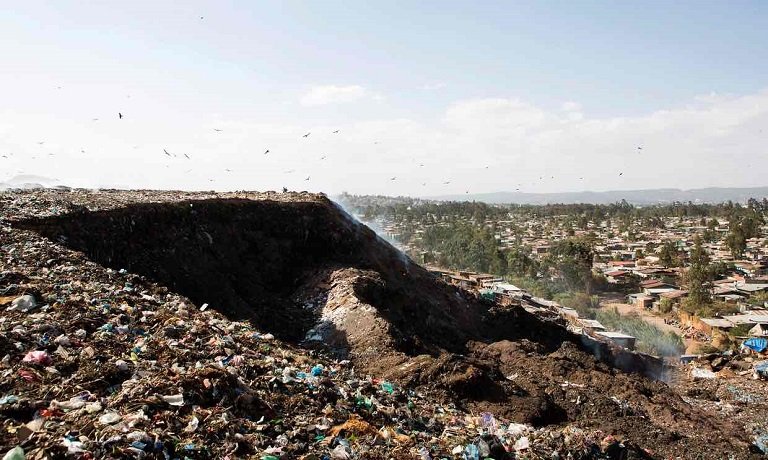By Nicholas Ojo-Awo

Ethiopia just suffered a refuse dump slide that left not just 46 people dead but there are still dozens more that are unaccounted for.
This accident occurred at a landfill that has been operational for the past 50 years.
Garbage barrage is a phrase that I coined after I watched the continuous dumping of refuse in an already saturated landfill somewhere in the Lagos metropolis.
The process encapsulates finding ingenious ways to dump further refuse in a landfill after the holding limit has been exceeded or the retaining capacity for which it was originally designated has been passed.
Not just limited to Lagos, this situation is actually prevalent in most state capitals across the country.
Even though being situated within the centre of excellence with the highest population in the country the dumpsites of Olusosun at Ojota and Solous at Igando are enormous.
Mountainous heaps of refuse almost reaching to the heights of sand dunes in the Sahara and these huge domes are even more impressive when one considers that they generally start out as landfills for depressions in the earth.

What then can we learn from the incidence that occurred in Ethiopia lest we suffer a similar occurrence in Nigeria, bearing in mind that our greater population would only proportionally relate to an equally greater catastrophe.
>>>All outdated landfills should be closed down and access should be restricted to the general public.
>>>New and modern refuse/sewage dumps should be constructed. This would not only help in protecting the various layers of the soil, but also the atmosphere (pungent repulsive smells from sewage dumps) and most importantly the ground water which is always susceptible to contamination and eventually pollution by heavy metals from leachate that seep through pores in the subsoil to waters in aquifers or fractures in rock formations.
>>>Evacuation of all persons that have constructed shacks and converted the refuse dump to their homes as well as generally relocating persons whose residence lie within 0-1km of the dump as studies have shown that they are more susceptible to the impacts of pollutants in the ground water surrounding the area.
Another important facet that the government as well as other private individuals need to look into is the “waste to energy” drive that is gaining insteps into renewable energy frontiers.
Research studies have shown that ethanol fumes from sewage dumps can be harvested and put to various other uses.
Finally, I would like to congratulate the immediate past minister of environment, Amina J. Mohammed, on her assumption of office as the deputy secretary general of the United Nations.
Her tremendous contributions to the advancement of the environmental struggle as well as her efforts on the millennium development goals plus effectively coordinating the taskforce on gender and education for the UN millennium project are worthy of mention across the globe.
Kudos Madam.
Onward forever, the fight for environmental protection.
Long live the Federal Republic of Nigeria.











